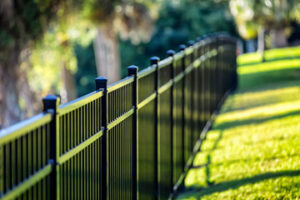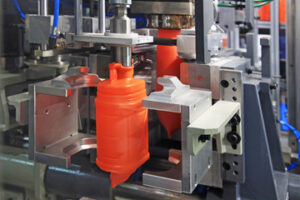Your home should be your own private oasis, and fences are a great way to mark your property boundaries and keep out prying eyes. If you have pets or children that like to wander, a fence can also help you keep them on your property.

Professional fencing contractors prioritize quality assurance and use their expertise to ensure your fence is installed properly. This minimizes unforeseen issues and expenses. Contact Austin Fence Company for professional help.
Privacy is one of the most important benefits homeowners seek when purchasing a fence. After a long day at work, or schlepping kids to activities, it’s nice to be able to come home and relax in a private space away from prying eyes of neighbors, friends and strangers. A well-constructed privacy fence provides this luxury, allowing homeowners to enjoy the peacefulness of their backyards and gardens without feeling exposed.
Additionally, a privacy fence can help reduce noise pollution from neighbors and local traffic. Choosing a fence made from thick tongue-and-groove boards, or heavy materials like wrought iron, can muffle sounds before they reach the interior of your home. This noise control is especially useful for households located near busy streets, or those with noisy neighbors.
Another unexpected benefit of a privacy fence is its ability to clearly define property lines. This is especially helpful for those with problem neighbors who don’t respect boundaries, or whose mowing and gardening activities encroach upon your backyard space.
Finally, many areas and HOA guidelines require that the finished side of a fence face neighbors or public spaces to maintain a uniform, visually appealing look throughout neighborhoods and streetscapes. Facing the finished side of your fence in accordance with these guidelines shows respect for your neighbors and community, and can help prevent costly rework or fines down the road.
Ultimately, deciding which side of your privacy fence to showcase to the world comes down to personal preference and unique circumstances. Weighing these factors and consulting with an experienced fence installation company will help you choose the best orientation for your privacy fence. A reputable fence company will also know the ins and outs of local regulations, and can help mediate conflicting preferences or unique situations that may arise during your project.
Noise Insulation
Noise pollution is a common concern that can be difficult to overcome, especially when living close to busy roads or industrial zones. Fortunately, fences can help mitigate these issues by creating a barrier that intercepts and disperses sound waves, reducing the intensity of unwanted noise. However, it’s important to choose the right materials and installation techniques for effective noise mitigation.
The type of material used in a fence can have a significant impact on its ability to block sound. Heavier or denser materials are more effective at blocking sound, such as cedar wood and brick. In addition, incorporating acoustic foam or fiberglass insulation can enhance the noise-blocking capabilities of a fence. Choosing a curved or angled fence design can also improve noise-blocking abilities by reducing echoes and reverberation.
A soundproof fence is an excellent option for homeowners who want to create a quiet, relaxing backyard space. These fences are made of specialized materials that absorb and block unwanted noise, significantly reducing its transmission. They’re also popular among commercial establishments that experience high levels of noise from passing vehicles and surrounding businesses.
To maximize the performance of a soundproof fence, it’s essential to keep it well-maintained and protected. Regular inspections can help identify any cracks, holes, or sagging panels that can compromise its effectiveness. Regular cleaning and reapplying weatherproof coatings can also help ensure that the material remains intact and continues to block sound effectively. Additionally, incorporating additional noise-reducing measures, such as white noise and plants, can also improve the performance of a sound barrier fence.
Security
A fence is one of the first lines of defense on your property. It will keep intruders from making their way into your home and prevent pets and children from wandering outside of the yard. A fence company will help you choose the best security fence for your needs.
If you want a fence that keeps noise out, a company can customize it with materials that reduce sound. This can be a great solution for people who are trying to get more sleep or who live near a busy road.
Choosing the right fence for your home will make it more secure and add value to your house. A professional can offer you insights into different material options and explain the benefits and disadvantages of each. They will also assist you in finding the right location for your fence. This will allow you to maximize the resale value of your home.
When you’re looking for a fence company, be sure to ask about their insurance. Even the most experienced contractors can have an accident, so having insurance will give you peace of mind. It will also ensure that you are not liable for any medical bills if something happens to the contractor while working on your fence.
A security fence can be one of the most important investments you can make for your home. It will increase the resale value of your property and improve the curb appeal of your home. It can also protect your loved ones and valuables from intruders. However, it is important to elect the right kind of fence to maximize the benefits. The best security fence is one that can be made to fit your needs and budget.
Durability
A fence serves many purposes for residential or commercial properties, including delineating property boundaries, enhancing privacy and security, and obstructing annoying noise and prying eyes. However, one of the most important considerations when choosing a fence is durability. A durable fence can help homeowners save money in the long run by requiring less maintenance and repairs than a more flimsy option.
Durability is especially important when it comes to iron fences, as they can withstand harsh weather elements that could damage other types of fences. In addition, they are also designed to resist rust and corrosion, which can add to their lifespan and protect against other costly damage.
As a result, iron fences tend to have a higher initial cost than other fencing options, but their longevity often means they are more affordable than less durable alternatives in the long run. If you are considering iron fencing for your home, it is recommended to apply a protective coating to prevent rust and corrosion. It is also a good idea to regularly inspect your iron fence for signs of rust and corrosion and address these issues immediately.
Wood fences also offer excellent durability, with cedar wood fences standing out as the premier option due to their beauty and resilience. Cedar is more expensive than other wood fences, but it can offer a high return on investment over the course of its lifetime.
Another excellent option for homeowners looking for a durable wood fence is pressure-treated pine. This type of wood is treated to withstand harsh weather conditions and prevent rot and insect infestation, and it can still look attractive even after decades of wear and tear.
Aesthetics
A beautiful fence does more than demarcate property lines. It also enhances your home’s curb appeal, which can increase its market value. In addition, a fence can reduce noise from the surrounding environment, creating a more peaceful outdoor living space. Moreover, it can add beauty to your landscape, and it can serve as a conversation piece with visitors and neighbors.
A good fence company can offer a variety of aesthetic options for your yard. They can guide you towards a fence design that matches your home’s architectural style, as well as your personal taste. In the process, they will also consider local regulations and homeowner association guidelines so that your fence does not compromise your neighborhood’s character or cause legal issues down the road.
If you are planning to sell your property in the future, a beautiful fence will impress potential buyers before they even step foot on your land. It will also show that you care about your home and take pride in maintaining its appearance. Moreover, a good-looking fence can make your backyard feel like an extension of your home, transforming it into an inviting outdoor living space where you can host barbecues or hang out with friends and family.
A professional installation is essential for your fence’s durability and longevity. A fence that is not properly installed can easily deteriorate over time, leading to costly repairs and replacements. It is also important to choose a fence material that complements your home’s architectural style and landscaping, as it will contribute to the overall look of your property. Also, it is a good idea to keep your fence clean and free from rust as soon as you notice signs of corrosion.
